Dear friends of art,
On October 8, Otto von Kotzebue exhibited at Stolberg Castle near Aachen. I would like to thank the organizers again and especially the curator Rafael Ramirez Máro, who initiated this project!
The exhibition can be visited until November 12, 2017 in the castle of Stolberg.
The opening hours are from Tuesdays – Sundays, from 3 – 6 pm.
The castle is a real sight to see and it is also worth visiting on its own. So if you have a free weekend, I can only recommend you to visit Stolberg.
Kind regards
Gabriele Paqué

Warm invitation
Press

Otto von Kotzebue has already exhibited several times in my gallery in Bonn and presented his wide range of painting to the public. This time, however, he does not exhibit in Bonn, but in the castle Stolberg near Aachen, where this time again new works of watercolor painting are the focus. But also some oil paintings, which were already exhibited in Bonn, will be shown here. The theme of the exhibition is “East-West”, so you can expect to see Otto von Kotzebue’s comprehensive impression of America and Russia, especially with regard to landscape painting.
Otto von Kotzebue’s ancestor was the famous poet and playwright August von Kotzebue, who was eventually appointed Russian Consul General. His son Alexander von Kotzebue, in turn, was a battle and history painter for Tsar Peter III. Likewise, it was a Kotzebue who, in 1818, in the service of Russia, discovered an island in Alaska that bears his name to this day. In World War II, it was a distant relative, the American Albert Kotzebue, who established the first contact of the Allies with the Soviets….
Otto von Kotzebue’s painting is characterized by endless expanses, in which almost only by chance a spark of civilization can be found in the form of a house, a granary or a boat on the open sea. Supposedly contrary to this are his cityscapes. In his paintings, man as an individual is never to be found: One searches in vain for persons who could give the picture a deeper context than the one for which the landscape itself already stands. Rather, man is recognizable through his impact on his environment, and the paintings reveal through the eyes of the painter that which man retains in his memory in recollection of what the painter has experienced in the various places of this earth. From the hectic, mad flickering lights of a New York Times Square to the melancholic, but no less romantic mood of a small Russian fishing boat on the shore of the icy sea. These images also reflect the soul of these two nations, which Otto von Kotzebue got to know on his travels and then preserved for eternity in his paintings.
Look forward to a beautiful, colorful and above all profound exhibition of this special artist!
in friendly cooperation with
Avec nos meilleurs compliments – Met vriendelijke groeten – Mit freundlichen Grüßen – Con saludos cordiales
ARTIBUS-Kooperationspartner
ART DEPARTMENT Villa Museum Zinkhütter Hof
ART Collection Janet Brooks Gerloff
Fondation Peter Hodiamont – Baelen s.V./Belgien
Christa & Karl-Heinz Oedekoven
www.villa-zinkhuetterhof.euwww.arttour-stolberg.dewww.kunstroute-weser-goehl.eu
www.janetbrooksgerloff.jimdo.comwww.fondation-hodiamont.org
Paintings of the exhibition
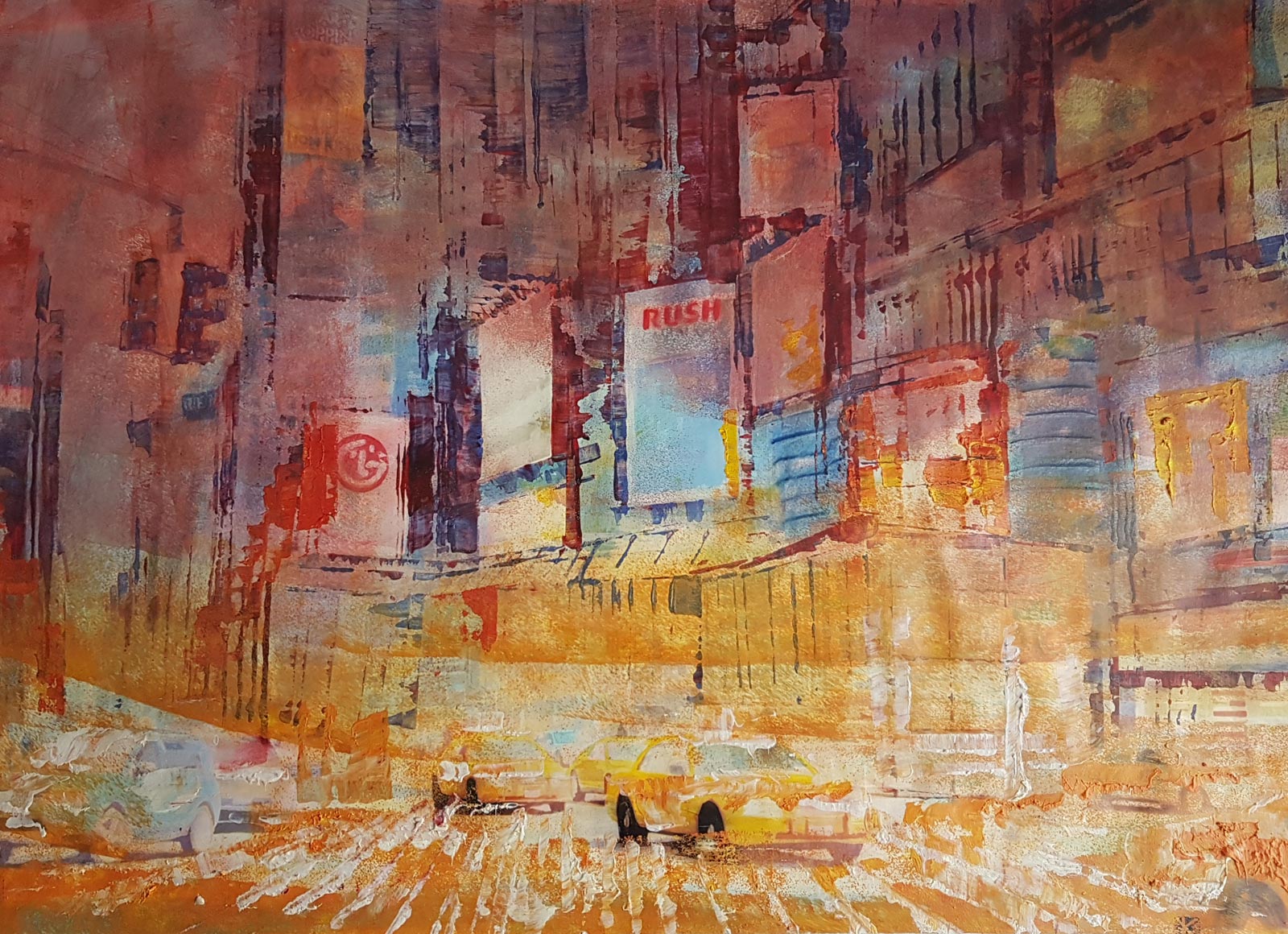
Otto von Kotzebue
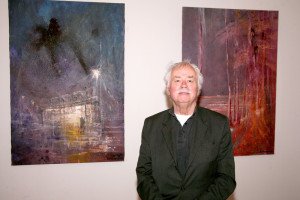
Otto von Kotzebue (born 1936 in Munich) is a German architect and painter. He is the great-grandson of Alexander von Kotzebue (German-Russian battle-painter of the Romantic period) and Great-great-grandson of the playwright August von Kotzebue.
After cancelling high school, Kotzebue became a bricklayer and then studied architecture at the college in Munich. Afterwards, he worked as a freelance architect for architectural offices in Munich, Athens, Tel Aviv, Copenhagen, Sao Paulo and Johannesburg until 1980. From 1980 onwards, he devoted himself entirely to painting. Since the 1990s, Otto von Kotzebue has lived and worked as a painter in his studio behind the Neue Pinakothek in Munich.
Like his great-granduncle, who was also named Otto von Kotzebue and who took part in three great world journeys, Otto von Kotzebue traveled the world and kept his travel impressions on often large-format screens.
Exhibitions:
Numerous exhibitions at home and abroad.
Among others Darnestown (Maryland, USA), Naples (Florida, USA), various exhibitions in Munich and other cities
“The foggy and turner-like moods of his paintings correspond to the fresco-esque application of paint on the picture surface, which is reminiscent of Impressionist painting in its sublime luminosity. Kotzebue’s vedutes look enraptured, dreamlike, behind a veil, giving schemas of figures and perspective hints to the optimism of the ‘American dream’ an ironic and romantic distance. “
Wolfgang Sauré, Weltkunst
“Many viewers may have difficulty recognizing the places Kotzebue captured on his trips to the United States. Surely New York and Chicago do not look so empty and dusty, so tired and desolate? Kotzebue saw and sees America with the critical, distanced eyes of a European. He sees behind the obtrusive facades, almost does not notice the clamor of advertising and the imperial showiness of the gigantic skyscrapers.
His gaze asks about completely different things: about the people and the substance of their lives. He asks the questions that were not formulated, and consequently not thought of, in the great American dream.”
Dr. Ch. Heybrock
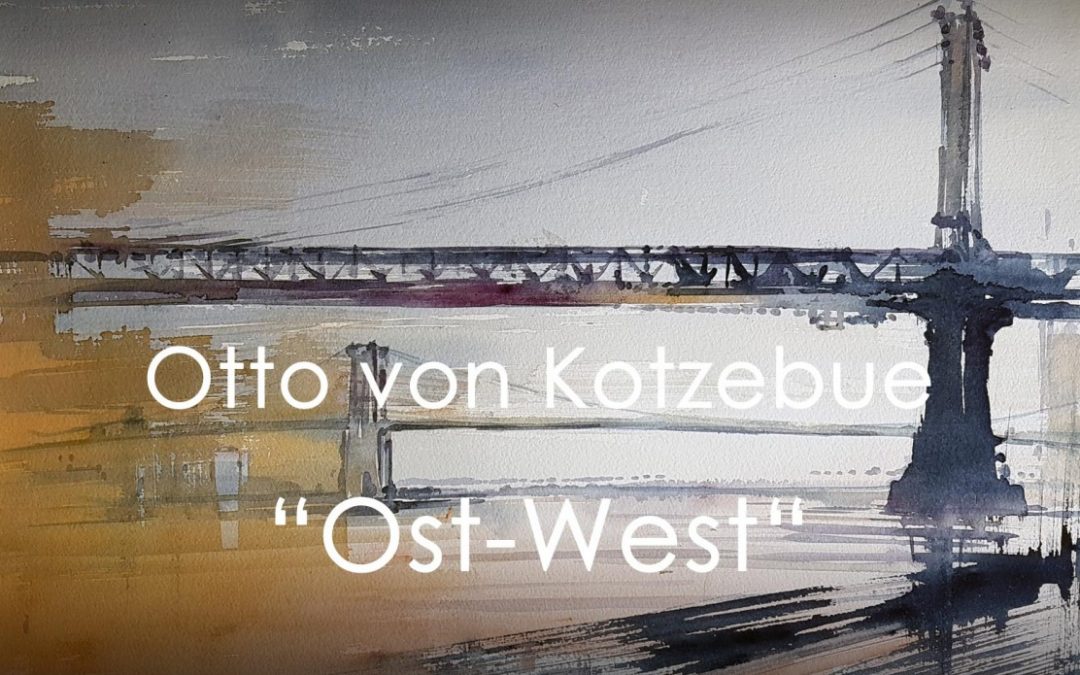
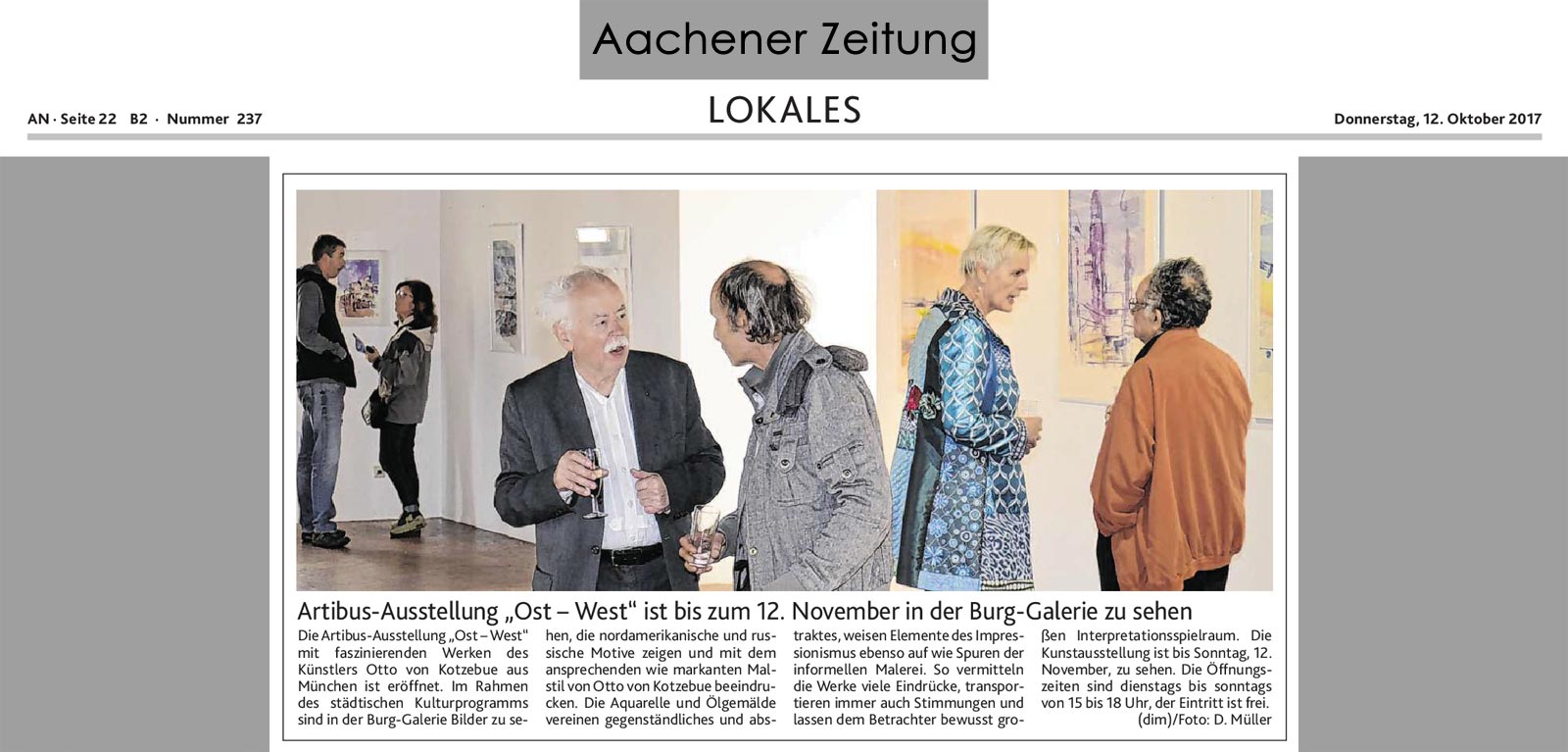
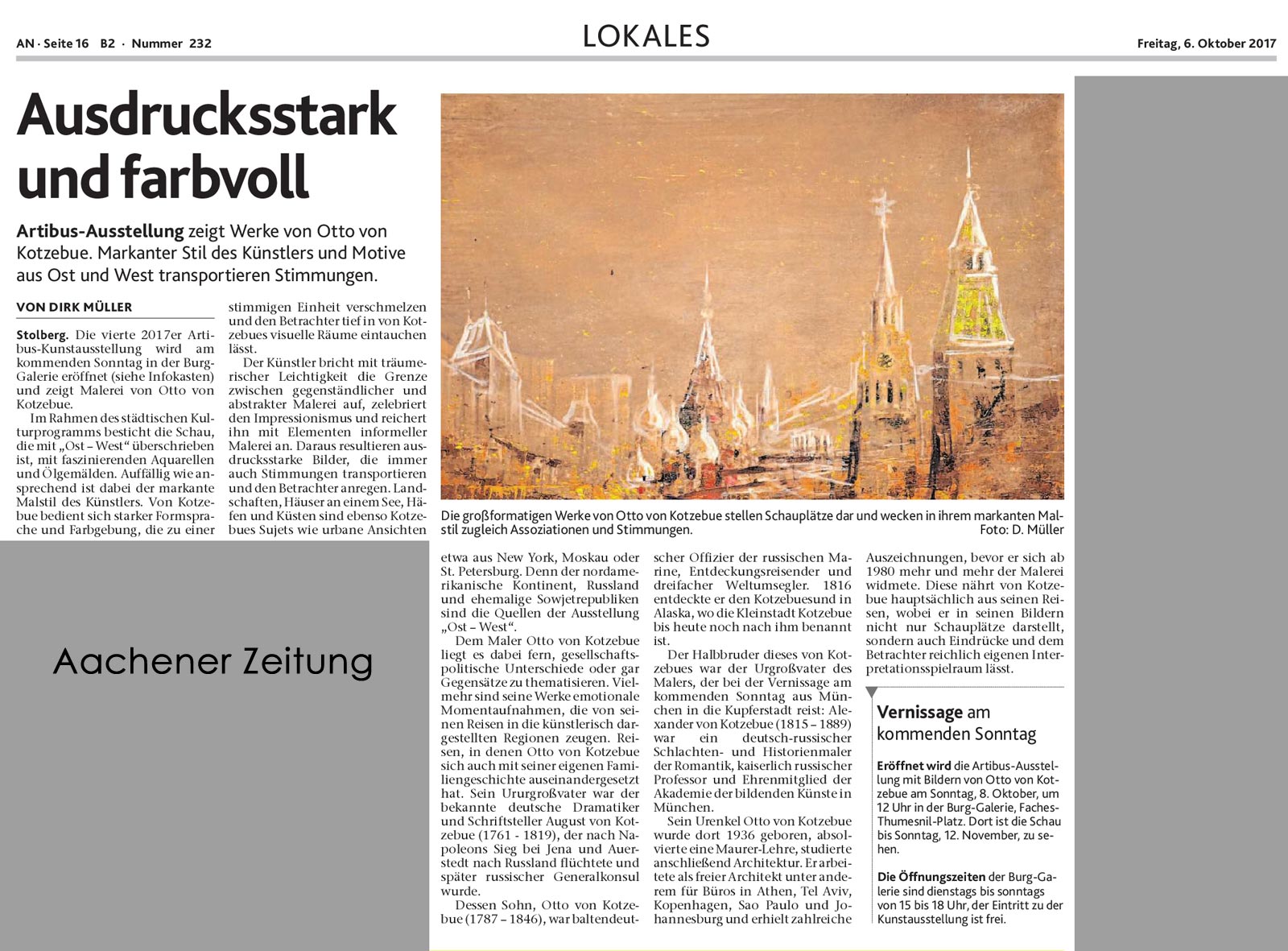

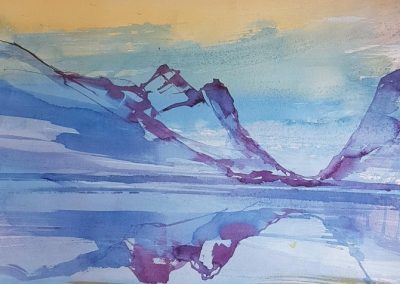

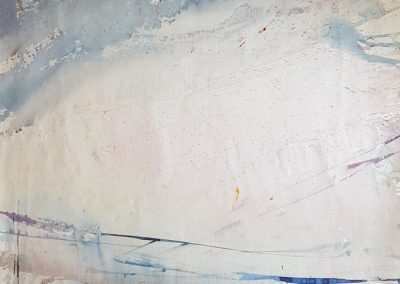
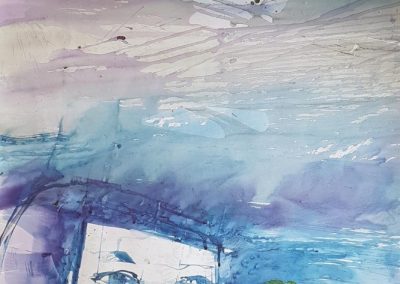

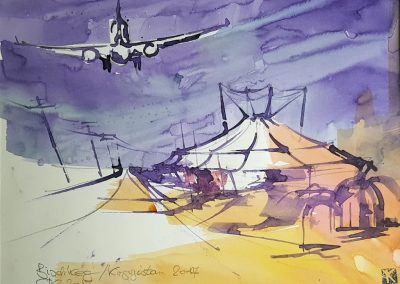
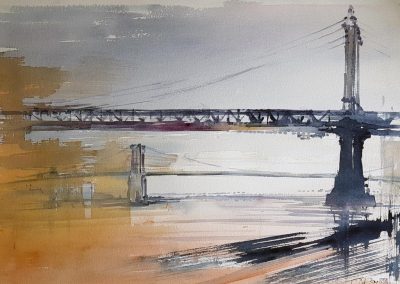
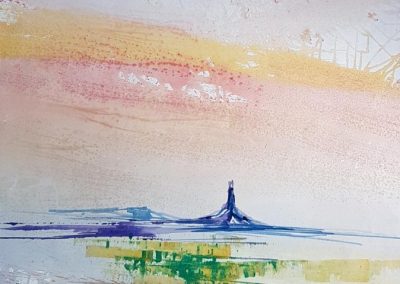

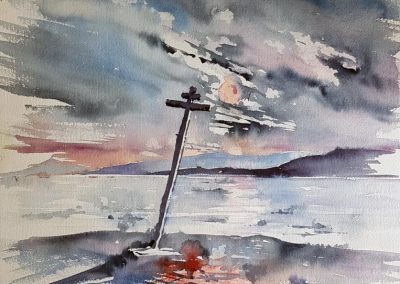
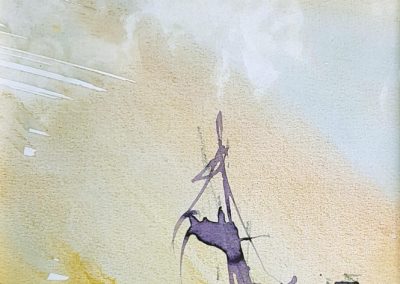

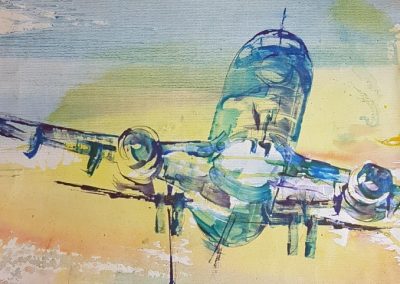
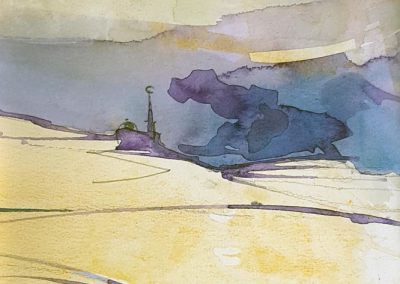
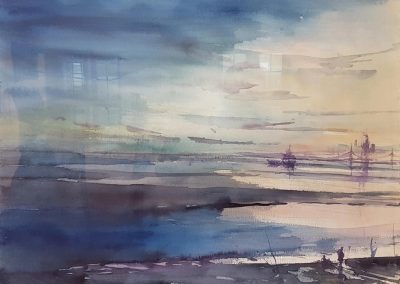
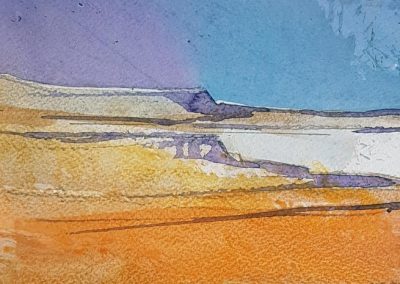
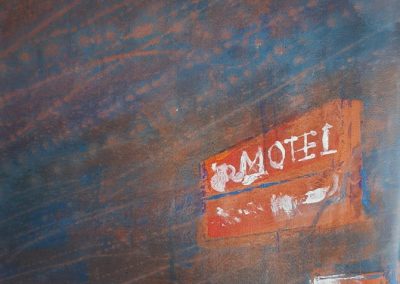
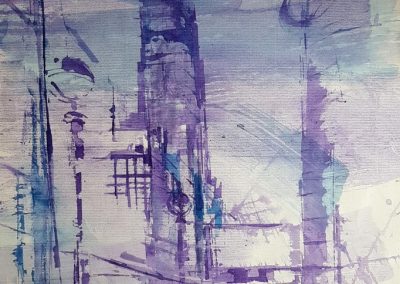

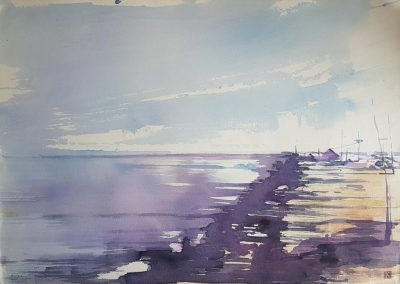
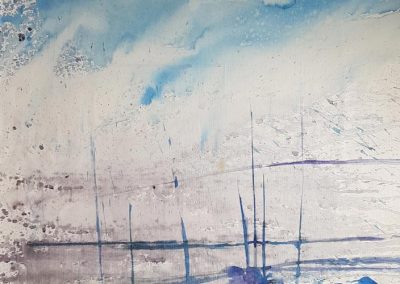
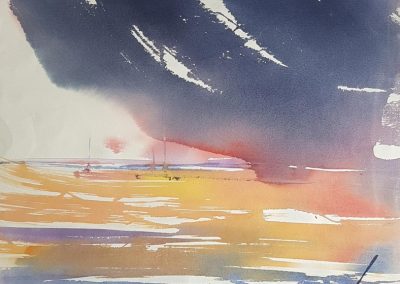

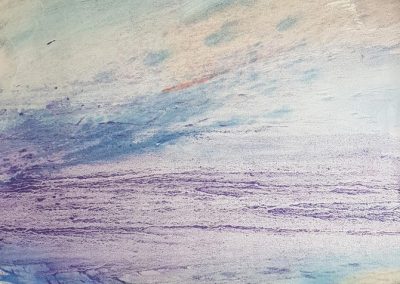
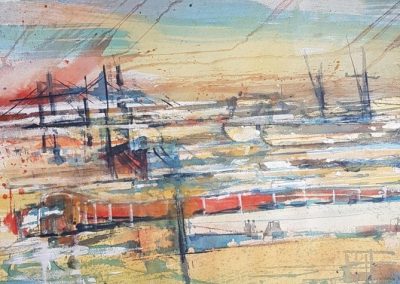

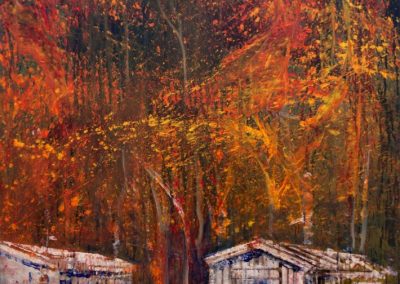
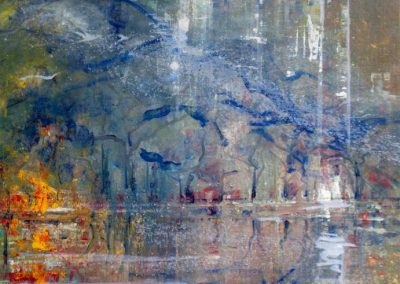

Recent Comments